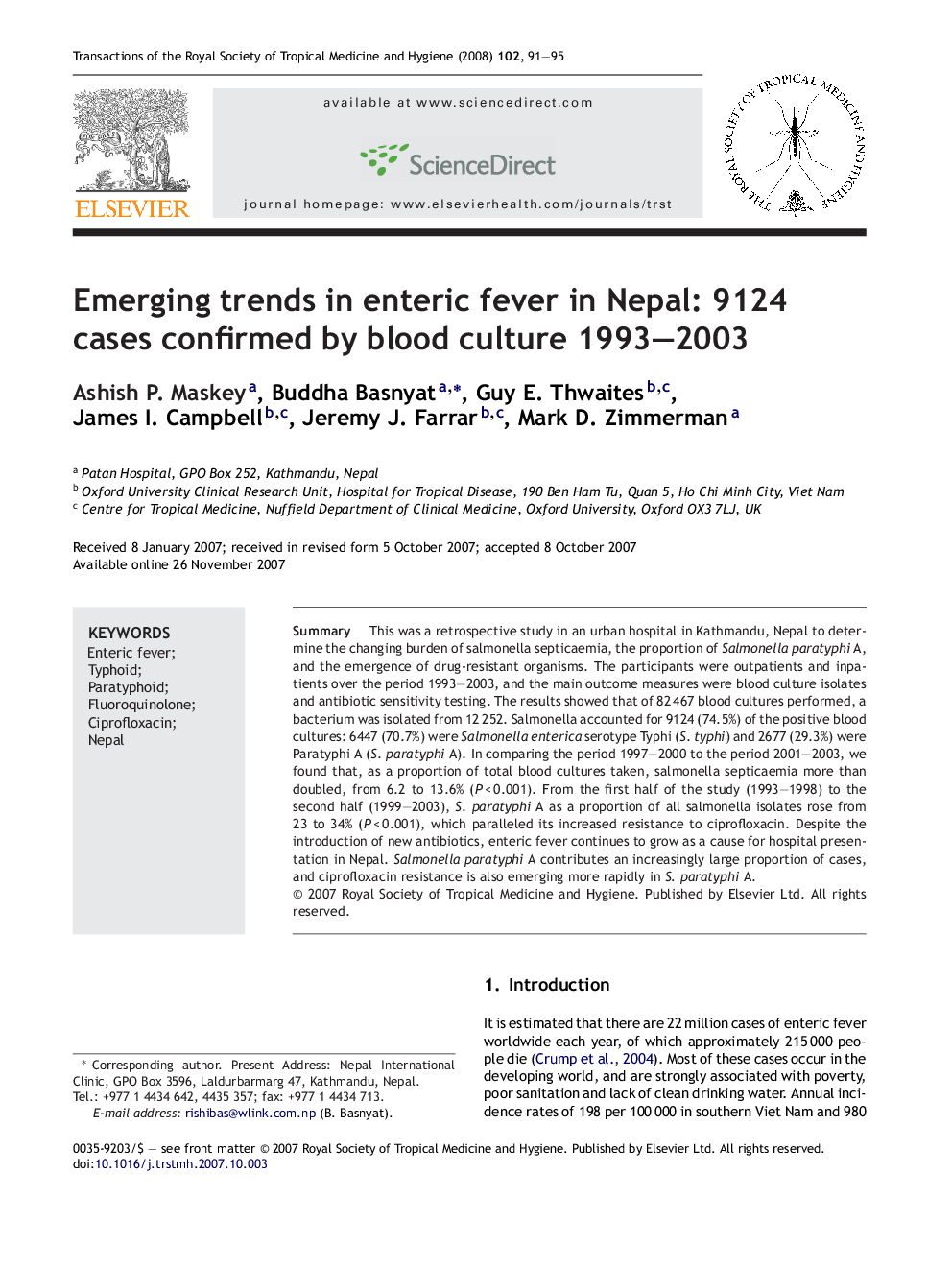| Article ID | Journal | Published Year | Pages | File Type |
|---|---|---|---|---|
| 3421456 | Transactions of the Royal Society of Tropical Medicine and Hygiene | 2008 | 5 Pages |
Abstract
This was a retrospective study in an urban hospital in Kathmandu, Nepal to determine the changing burden of salmonella septicaemia, the proportion of Salmonella paratyphi A, and the emergence of drug-resistant organisms. The participants were outpatients and inpatients over the period 1993-2003, and the main outcome measures were blood culture isolates and antibiotic sensitivity testing. The results showed that of 82Â 467 blood cultures performed, a bacterium was isolated from 12Â 252. Salmonella accounted for 9124 (74.5%) of the positive blood cultures: 6447 (70.7%) were Salmonella enterica serotype Typhi (S. typhi) and 2677 (29.3%) were Paratyphi A (S. paratyphi A). In comparing the period 1997-2000 to the period 2001-2003, we found that, as a proportion of total blood cultures taken, salmonella septicaemia more than doubled, from 6.2 to 13.6% (PÂ <Â 0.001). From the first half of the study (1993-1998) to the second half (1999-2003), S. paratyphi A as a proportion of all salmonella isolates rose from 23 to 34% (PÂ <Â 0.001), which paralleled its increased resistance to ciprofloxacin. Despite the introduction of new antibiotics, enteric fever continues to grow as a cause for hospital presentation in Nepal. Salmonella paratyphi A contributes an increasingly large proportion of cases, and ciprofloxacin resistance is also emerging more rapidly in S. paratyphi A.
Related Topics
Life Sciences
Immunology and Microbiology
Applied Microbiology and Biotechnology
Authors
Ashish P. Maskey, Buddha Basnyat, Guy E. Thwaites, James I. Campbell, Jeremy J. Farrar, Mark D. Zimmerman,
